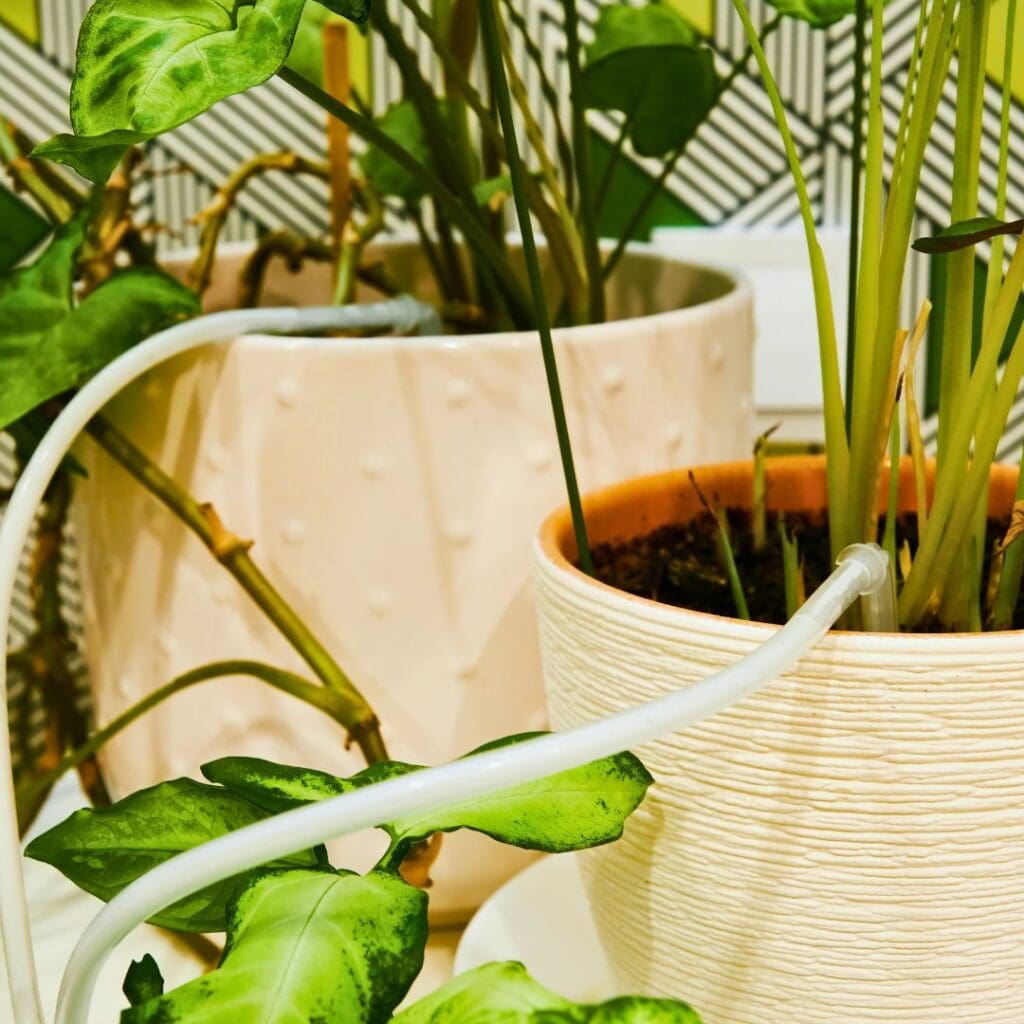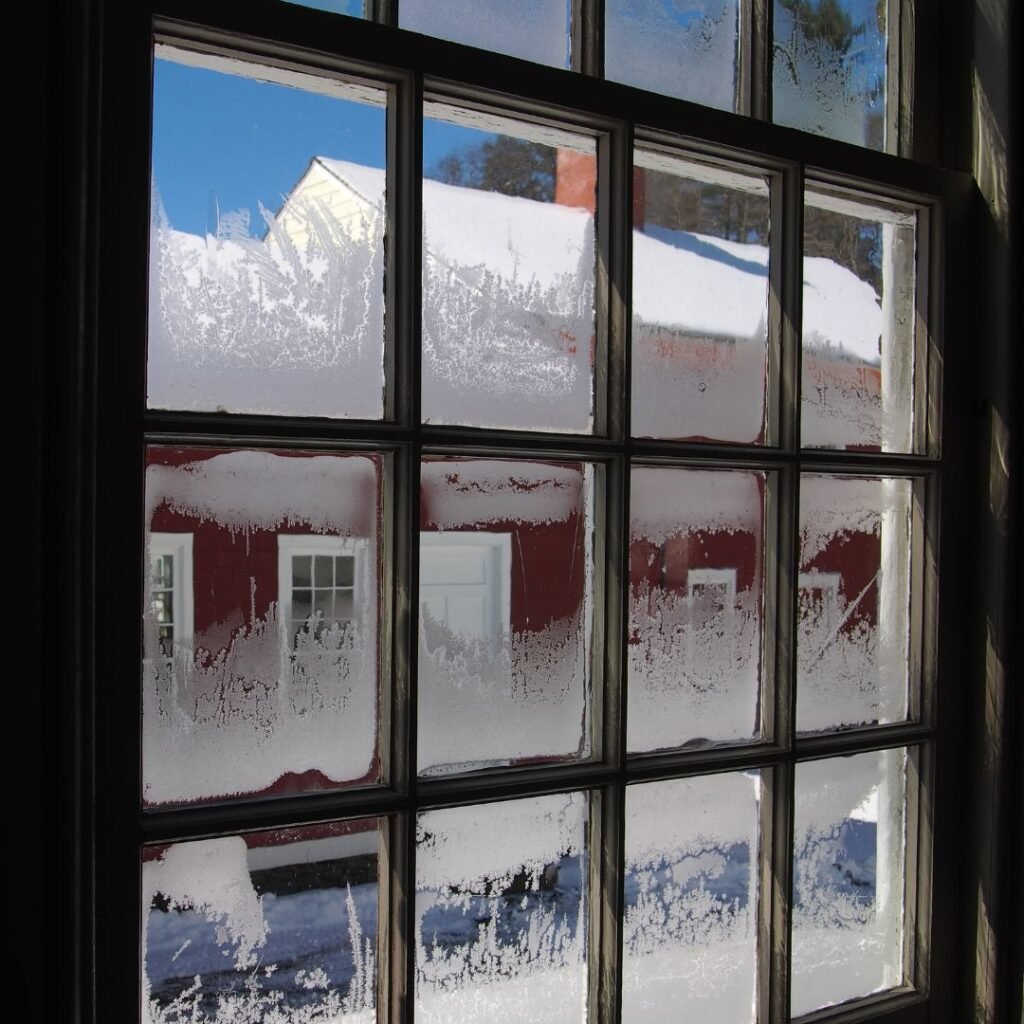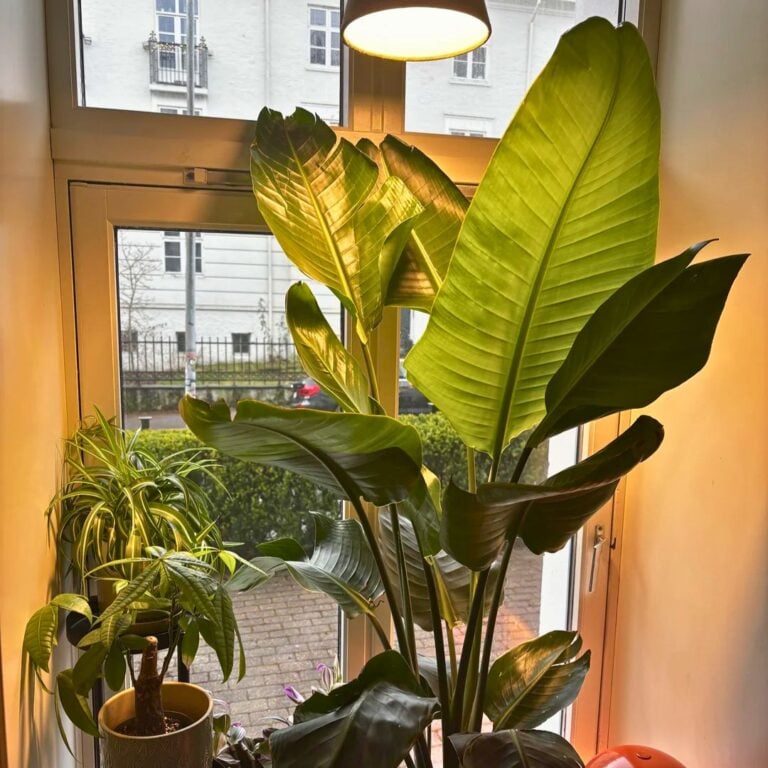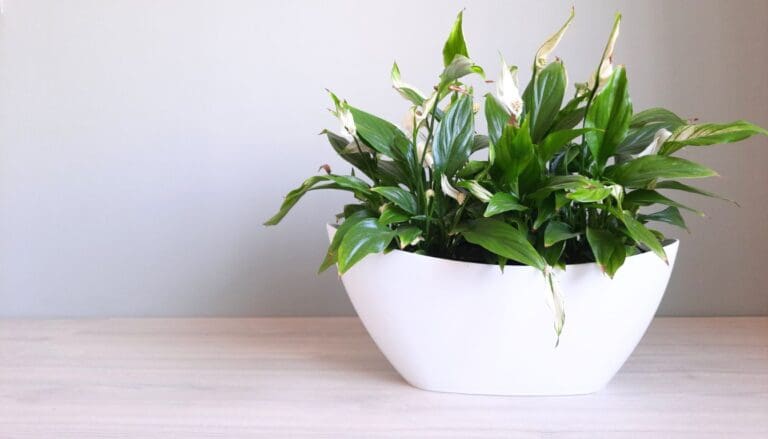8 Mistakes To Avoid When Watering Houseplants In Winter
I love how calm my home feels with healthy houseplants, especially in winter when everything outside looks dull. But I’ve learned that watering them the same way all year can cause problems.
Knowing how to adjust watering habits in colder months keeps plants strong and thriving.
When temperatures drop and sunlight fades, plants change how much water they need. I’ll share the most common watering mistakes to avoid this season so you can keep every leaf green and every root healthy.
Please note: Simplify Plants is reader-supported. As an Amazon Associate, I earn from qualifying purchases made by our readers with no extra cost added to you all! Some links in the post are affiliate links and I get a commission from purchases made through links in the post.
1) Overwatering due to reduced plant water needs

In winter, I always remind myself that plants drink less water. Shorter days and cooler air slow their growth, so they don’t use moisture as quickly as they do in summer.
If I keep watering on the same schedule, the soil just stays soggy for too long. Overwatering is probably the mistake I make most in winter.
It can lead to root rot, yellow leaves, and even mold on the soil. I’ve learned to check the top inch of soil before watering—if it feels dry, then it’s time.
I also make sure my pots have good drainage. Water that sits at the bottom can harm roots, especially when the air is cool.
I empty saucers after watering so no extra water lingers. To help me stay consistent, I use a lighter watering routine.
Sometimes I water every two or three weeks instead of weekly. Each plant is different, so I pay attention to how quickly the soil dries.
2) Ignoring the plant’s specific winter watering schedule

I’ve learned that each plant has its own rhythm, especially in winter. Some plants slow their growth and need less water, while others stay active and still need regular watering.
When I treat all my plants the same, I risk overwatering some and drying out others. I now check each plant’s needs before watering.
For example, succulents and cacti prefer dry soil for longer periods, while ferns and peace lilies like more moisture. Knowing this helps me keep their roots healthy and avoid rot.
I also pay attention to light and temperature changes. Plants near windows or heaters may dry out faster than those in cooler spots.
I adjust how often I water based on how quickly the soil dries, not just by the calendar. To stay on track, I keep a small watering log.
It reminds me when I last watered and helps me notice patterns. This simple habit keeps me from guessing and prevents mistakes.
3) Using cold water straight from the tap

I used to grab water straight from the tap without thinking about the temperature. But I learned that cold water can shock plant roots, especially during winter when indoor temperatures are warmer.
This sudden change can slow growth or even damage the roots. Now, I let the water sit until it reaches room temperature before watering.
It only takes a few minutes, and it helps my plants stay healthy and comfortable. If the water feels chilly to my touch, it’s probably too cold for the plants.
I aim for water that feels slightly cool or neutral, not icy. I’ve also noticed that letting the water sit helps chlorine and other chemicals evaporate, which makes it gentler on the soil.
It’s a small step, but it makes a difference in how my plants respond.
4) Watering on cold, frosty mornings

I’ve learned that watering plants early on cold mornings can cause more harm than good. The water stays cold for a long time, and that chill can shock the roots.
When the soil temperature drops, the plant slows down and struggles to take in moisture. I try to wait until later in the day when the room or sunlight has warmed up a bit.
This helps the roots absorb water more easily and keeps the plant from sitting in cold, soggy soil. A short delay can really help.
If I must water in the morning, I make sure the water is room temperature. Cold tap water can stress tropical plants that prefer warmth.
I usually fill my watering can the night before so it reaches a comfortable temperature by the next day. I also check that the soil feels slightly dry before watering.
Overwatering during cold weather can lead to root rot, especially if the plant isn’t actively growing.
5) Failing to check soil moisture before watering

I used to water my plants on a schedule, thinking it kept them healthy. Then I realized that not checking the soil first often led to soggy roots and droopy leaves.
Every plant and home environment is different, so timing can change from week to week. Now I check the soil moisture before I grab the watering can.
I stick my finger about an inch into the soil. If it feels dry, I water. If it still feels damp, I wait a few more days.
This simple step helps me avoid overwatering. Winter air is cooler and drier, and plants usually drink less water because they grow more slowly.
That means the soil stays wet longer. Using a moisture meter can also help if I’m unsure.
It gives a quick reading so I don’t have to rely only on touch. Whether I use a tool or my finger, I always check before I pour.
6) Neglecting to reduce watering frequency

In winter, I always remind myself that plants drink less water. Shorter days and cooler air slow down their growth, so they don’t need as much moisture as they do in summer.
If I keep watering on my usual schedule, the soil can stay too wet for too long. I’ve learned that wet soil can lead to root rot, which is one of the most common winter problems.
When roots sit in soggy soil, they can’t get enough oxygen. That’s why I make sure to check the top inch of soil before watering.
If it still feels damp, I wait a few more days. I also notice that different plants dry out at different speeds.
Cacti and succulents may only need water once a month, while leafy plants might need it every couple of weeks. I adjust my routine based on each plant’s needs rather than sticking to a fixed schedule.
To keep things simple, I use a lightweight watering can so I can control how much water I pour. I aim to moisten the soil evenly without soaking it.
7) Not adjusting watering for lower indoor humidity

In winter, indoor air gets drier because of heating systems. I often notice my plants’ leaves curling or browning at the edges when the humidity drops.
This means they’re losing moisture faster through their leaves, even if the soil still feels damp. I used to water on the same schedule all year, but that didn’t work.
Lower humidity changes how quickly plants lose water, not how fast the soil dries. Some plants may need more misting, while others need a small humidity boost instead of extra water.
I now check the air moisture with a small humidity meter. If it’s below 40%, I group plants together or use a tray with water and pebbles.
This helps keep humidity steady without overwatering. It’s easy to think dry air means dry soil, but that’s not always true.
Overwatering in low humidity can cause root rot, especially when plants aren’t growing much in winter. I always test the soil first and water only when the top inch feels dry.
8) Watering leaves instead of soil

I used to think spraying water on my plant’s leaves would keep them healthy. But I learned that watering the leaves instead of the soil can cause problems, especially in winter.
When water sits on the leaves, it can lead to mold or leaf spots. The cooler air and lower light make it harder for the moisture to dry, which can harm the plant.
Plants take up water through their roots, not their leaves. So, I make sure to pour water directly into the soil where the roots can absorb it.
If the leaves look dusty, I gently wipe them with a damp cloth instead of spraying water. That keeps them clean and able to absorb light better.
Now, I always focus on watering the soil slowly and evenly, letting the extra water drain out.
Understanding Winter Watering Needs
I adjust how I water my plants in winter because cooler air and shorter days change how fast soil dries. I focus on how temperature affects moisture and how to spot when plants get too much water.
How Cold Temperatures Affect Houseplants
Cold air really slows plant growth, so roots end up using less water. If I keep watering like it’s summer, the soil just stays wet forever.
That extra moisture makes roots weak, and honestly, rot sneaks up fast. I’ve noticed that indoor heating throws another curveball into the mix.
Warm, dry air from heaters dries the top of the soil quickly, but the lower layers can still be damp. To avoid overdoing it, I always check the soil by sticking my finger about an inch deep before I water.
I move my plants away from cold windows or any drafty spots. Sudden cold snaps stress them out and make it tough for roots to soak up water.
Keeping the room between 60–75°F (15–24°C) seems to keep things steady enough for most plants.
| Temperature Range | Watering Frequency | Notes |
|---|---|---|
| Below 60°F (15°C) | Less often | Soil dries slowly |
| 60–75°F (15–24°C) | Moderate | Ideal indoor range |
| Above 75°F (24°C) | Slightly more often | Watch for dry air |
Signs of Overwatering in Winter
When I mess up and overwater, I usually see yellowing leaves or soft stems. Sometimes there’s even a musty smell coming from the soil.
These are pretty clear signs the roots aren’t getting enough air. If the soil looks wet for days, it’s definitely holding more moisture than the plant wants.
I stick with pots that have drainage holes so water can get out. If the pot feels weirdly heavy, I’ll wait a few more days before watering again.
I always dump out any standing water from saucers—roots hate sitting in puddles. Sometimes I even fluff up the top layer of soil to help it dry out faster.
Healthy roots look firm and white, not brown or mushy. I try to watch for these little details so my plants make it through the colder months.
Creating the Right Environment for Healthy Roots
I focus on keeping my plants’ roots strong by managing air moisture, light, and the tools I use for watering. These little things help me avoid stress, rot, and sad-looking growth during winter.
Humidity and Light Considerations
In winter, indoor air gets dry, and roots can really struggle. I’ll use a humidifier or just set a tray of water near my plants to bump up the humidity.
Grouping plants together actually helps them share moisture, which is pretty cool. I keep my plants away from heating vents since hot air dries out the soil way too fast.
Whenever I can, I open the curtains so they get bright, indirect light during the day. If sunlight’s in short supply, I’ll use LED grow lights for about 10–12 hours daily.
I try to keep the lights close but not so close that the leaves burn. Here’s a simple cheat sheet I follow:
| Condition | Ideal Range | Tip |
|---|---|---|
| Humidity | 40–60% | Use a small humidifier |
| Light | Bright, indirect | Rotate plants weekly |
| Temperature | 65–75°F | Avoid cold drafts |
Making these little tweaks keeps my plants from drying out and helps their roots stay busy.
Choosing the Best Watering Tools
I’ve learned that having the right watering tools actually matters a lot. A watering can with a narrow spout lets me aim water right at the soil, not the leaves.
This cuts down on mold and keeps the moisture where the roots want it. For small pots, I like using a squeeze bottle so I don’t overdo it.
Sometimes I grab a moisture meter instead of just guessing when to water. When I water, I make sure the pot has drainage holes so any extra water can escape.
That simple habit has saved a lot of roots from rotting, honestly. Good tools save time and protect plant health, especially when winter makes watering a little more complicated than usual.
Frequently Asked Questions
I’ve noticed my houseplants need less water in winter since the air’s cooler and growth slows down. I also pay attention to water temperature, indoor heating, and soil moisture to keep them happy.
How often should I water my houseplants during the winter months?
I water less often in winter because the soil just doesn’t dry out as fast. I check the top inch and only water if it feels dry.
What are the signs of overwatering in winter, and how can I avoid it?
Yellow leaves, soft stems, and soggy soil usually mean I’ve gone overboard. I let the soil dry out longer between waterings and always make sure the pot drains well.
Can the type of water I use affect my houseplants in the winter?
Yeah, it can. I use room-temperature water instead of cold tap water so I don’t shock the roots.
If my tap water’s heavy on chlorine, I’ll let it sit overnight before using it.
Are there any special considerations for watering succulents or cacti in cooler weather?
I water succulents and cacti very sparingly in winter. Their soil has to be totally dry before I add more water—sometimes that’s only once a month.
How does indoor heating impact houseplant hydration in the winter?
Indoor heat dries the air out faster, so I watch for dry soil and crispy leaf tips.
Sometimes I move plants away from heaters or just run a small humidifier nearby.
What’s the best way to check if my houseplants need water during winter?
I usually just touch the soil to get a sense of the moisture. If it feels dry about an inch down, I’ll give the plant a light drink.
But if the soil’s still damp, I wait a few more days—no need to rush it.
Recommended Garden Supplies
| Product Image | Our Recommended Gardening Supplies | Check Offers! |
|---|---|---|
Top Top
Top
Top
Top
Top
Top
Top
Top | rePotme Houseplant and Tropical Classic Potting Soil Mix | Check Offer On Amazon |
 Top
Top
Top
Top
Top
Top
Top
Top | Espoma Organic Indoor Plant Food | Check Offer On Amazon |
 Top
Top
Top
Top
Top
Top
Top
Top | GooingTop LED Grow Light 6000K Full Spectrum Clip Plant Growing Lamp | Check Offer On Amazon |
 Top
Top
Top
Top
Top
Top
Top
Top | Soil Moisture Meter | Check Offer On Amazon |
 Top
Top
Top
Top
Top
Top
Top
Top | Govee Hygrometer Thermometer, Bluetooth Enabled! | Check Offer On Amazon |
 Top
Top | LEVOIT Humidifiers for Large Room(Best For Plants) | Check Offer On Amazon |
 Top
Top
Top
Top
Top
Top
Top
Top | Upgraded DIY Automatic Drip Irrigation Kit, 15 Potted Houseplants Support | Check Offer On Amazon |
 Top
Top
Top
Top
Top
Top
Top
Top | Stainless Steel Heavy Duty Gardening Tool Set | Check Offer On Amazon |
 Top
Top
Top
Top
Top
Top
Top
Top | Bonide Insecticidal Soap | Check Offer On Amazon |
 Top
Top
Top
Top
Top
Top
Top
Top | Bonide 32 oz Spray Neem Oil for Organic Gardening | Check Offer On Amazon |
 Top
Top
Top
Top
Top
Top
Top
Top | Garden Safe Fungicide | Check Offer On Amazon |






